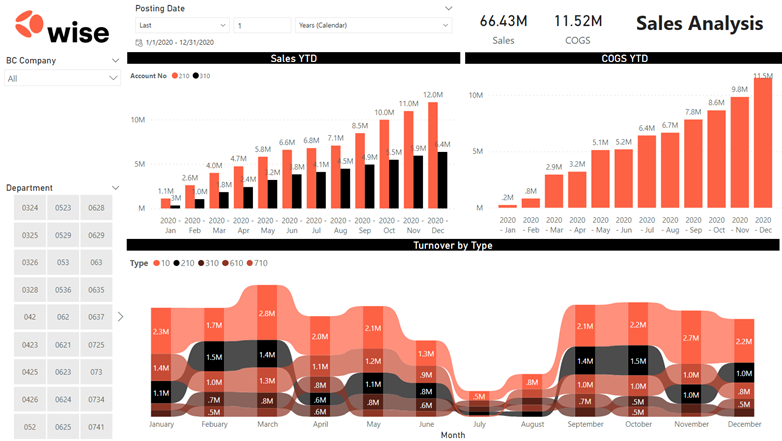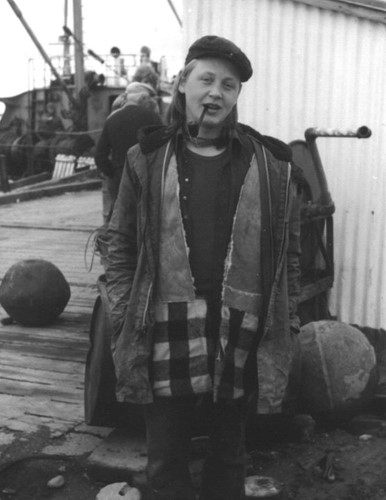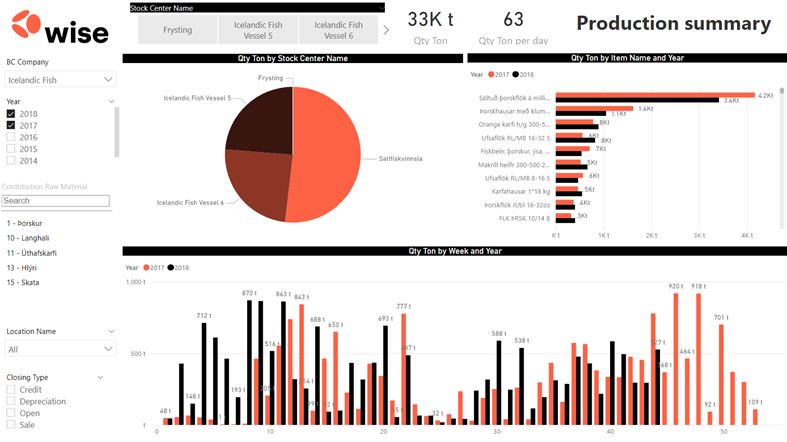The dream world of the future

Jón Heiðar Pálsson, director of sales at Wise
Powerful innovation and active technological development have driven the excellent results achieved by the Icelandic fisheries sector in recent decades. As the fourth industrial revolution sets in, digital transformation shapes all areas of society and business. Sjávarafl visited Jón Heiðar Pálsson, director of sales at the Icelandic software and business solutions company Wise, to discuss the future of the industry and how technology provides valuable insights into the seafood value chain
All the data in one place
Wise, formerly Maritech, has made a good name for itself in Iceland and abroad for its comprehensive software solutions that enable users to make good and well-informed business decisions. Wise offers solutions based on Microsoft’s business and accounting software Dynamics 365 Business Central, of which Wise is one of the largest resellers in Iceland. For two decades, Wise has provided fishing companies with their specialized fishing solution called WiseFish and Jón Heiðar estimates that between 80 and 90 percent of all catch in Iceland goes through the system in one way or another.
When WiseFish became available it marked a major revolution for the industry, says Jón Heiðar: “In most cases, fishing companies were running multiple systems that could not be integrated. You had to use special accounting software, a separate inventory system, thirdparty sales software, and calculate fishermen’s payroll with yet another program. WiseFish brought all of this together into a single whole. WiseFish gathers all the data on the seafood value chain and provides a unique insight and comprehensive overview of the complete process, from fishing and production to sales and distribution.”
Before WiseFish, this information was scattered throughout the value chain but the software made it easy to collect everything in a central database where nothing has to be entered or registered more than once since the data flow from a single source to where it is needed. When Navision, now Business Central, entered the scene it provided the basis for integrating the data and simplifying processes. “Our job is creating the ‘fish’ interface for this system that is used by over 150,000 businesses worldwide. We focus on adaptations and additions tailored to the demands of the fishing industry, without the need for developing the business, inventory, and accounting systems from the ground up. WiseFish was the first system to bring all these aspects together for the fishing industry, so now everyone can simply focus on what they do best,” says Jón Heiðar and cheekily adds: “A salesman does not have to know the first thing about accounting, they just need to know how to sell fish!”

WiseFish gathers all the data on the seafood value chain and provides a unique insight and comprehensive overview of the complete process, from fishing and production to sales and distribution
Good data - good decisions
As stated before, technological advances in recent years and decades have left their mark on the fishing industry. The digital transformation began at the end of the last century and it laid the foundation for today’s interconnected processing lines and the development in communication technologies that drive today’s innovations. By integrating data from peripherals such as scales, smartphones, and sales analysis.
Marel’s Innova software to name a few, WiseFish users gain a better overview of the fishing, processing, inventory, stock, sales, and distribution than ever before. They are thus able to manage their operations with up-to-date information and make the best decisions at any given time.
Jón Heiðar remembers how things were in the past: “I will never forget, I think I was 11 years old when I was called to the fish processing plant in the west and when I entered there were 20 tons of catfish on the floor. There we were, two boys with one gaff and we had to get to work immediately. Everyone was called from the school to the plant to process the catch before it went bad. There was not the same common sense and rationality in fishing as there is today. Now we can manage everything so much better because the data and information support proper organization.”
 Jón Heiðar Pálsson, fishing lobster at Höfn on Ólafur
Jón Heiðar Pálsson, fishing lobster at Höfn on Ólafur
Tryggvason SF
AI is the future
Seafood processing and production has to a large extent been automated, but it is soon time to take the next step into the future and use artificial intelligence to support decision making according to Jón Heiðar: “Imagine a production manager that needs to decide what to do with 20 tons of catch. He can make it into 100 different products. Countless factors inform the decision such as the catch’s size and age, which packaging is most economical, what different products are selling for and what the customers are demanding. There are around 30 or 40 indicators that this manager needs to be able to read in an instant it all in one place to help you make the best possible decision. This is the vision we are working towards.”
But is this realistic? What are we at today? “We have been developing to figure out how best to process the catch.” Jón Heiðar envisages that in the future artificial intelligence will be involved in determining processing methods to attain maximum efficiency and productivity as well as getting the most value out of the limited resource at our disposal: “We live in a digital world and could get data from a hundred places in the sales, fishing, processing and customer history, and gather production summary and building all the necessary data streams and implementing the right data collection into our system, which would allow us to make these calculations,” answers Jón Heiðar optimistically. “WiseFish records fishing trips for example, in high detail. We track what is caught, its temperature, where it was caught and so on, so you can keep track of raw materials and know exactly what is in the hold, where it is located, how big the fish is, its age, and so on. When the ship arrives in port, the production manager can already have the production plan ironed out because he knows exactly what he has to work with and how best to allocate the catch to different processing methods. We want AI to help make these decisions based on the situation at that very moment, the market demand, and what the dealers are selling.”
Artificial intelligence also offers predictive value that can be used in the sales and marketing of products, says Jón Heiðar: “Salesmen could have an overview in one place what they have in stock and what will be available. The production would be completely transparent and controlled based on demand and market circumstances. This would allow them to be quicker to offer customers products than is possible today because they would see what is being produced and what kind of catch is incoming. Products could be offered while they are still out at sea as freshly caught raw materials.”

We live in a digital world and could get data from a hundred places in the sales, fishing, processing, and customer history, and gather it all in one place to help you make the best possible decision. This is the vision we are working towards
Moving forward
A new version of WiseFish will be rolled out later this year. Wise is now collaborating with the consulting firm Itera on making the new version even better and more user friendly than the previous ones. Wise plans to bring its products to the Microsoft marketplace soon. To do that, the software must meet strict standards in terms of quality, functionality, and support. The new version will be an extension to Business Central, rather than built into the system, making it easier for partners and clients to install and update. At the same time, Microsoft’s cloud solution will be used, which according to Jón Heiðar is a key change that opens up various technical possibilities, including the use of artificial intelligence: “Back in the day, when I got into the industry there was only one computer down in Síðumúli that ran the software for 30 companies, virtually all the fishing companies in Iceland at the time. The bonus systems for all the processing plants were run on a single system and you were able to compare yourself to the other companies without necessarily knowing which company on the screen was which. We want to take this idea to the next level so that all WiseFish users can anonymously upload specific data to the cloud and have access to in-depth comparisons that help them find the best solutions at any given time. “
Such comparisons and the use of artificial intelligence in decisionmaking do not only have financial benefits. In addition to being optimized and streamlined with the help of technology, it is also possible to work towards increased sustainability and green goals. The carbon footprint of a product plays an increasingly important role in consumer choice, and with the overview and insight provided by WiseFish, it is possible to better manage the journey that power needs to take from landing to a plate. By avoiding unnecessary travel, carbon emissions are reduced and the likelihood of unexpected temperature changes that can affect the quality and shelf life of the product is reduced.
When it comes to planning anywhere along the seafood value chain, it is important to be able to make informed decisions based on the best information at any given time. “By using complete solutions and artificial intelligence, we can go even further than today. All the data is available to make all these decisions, but it is extremely difficult to process them because the data is so big. Now we just need to help our customers make better-informed decisions so that they can more purposeful in their actions and able to make the right choice every time, “says Jón Heiðar in the end.

WiseFish News